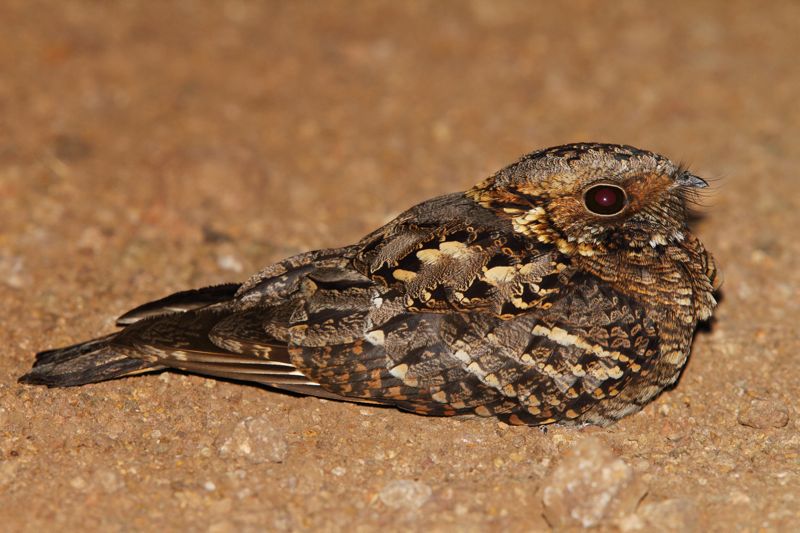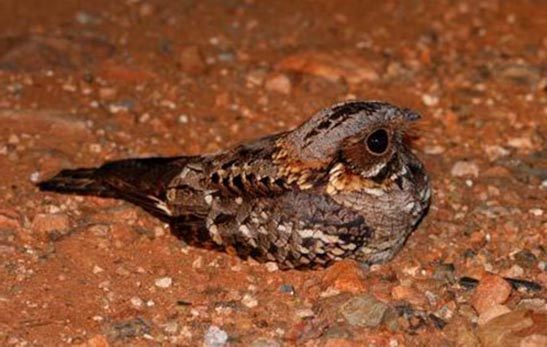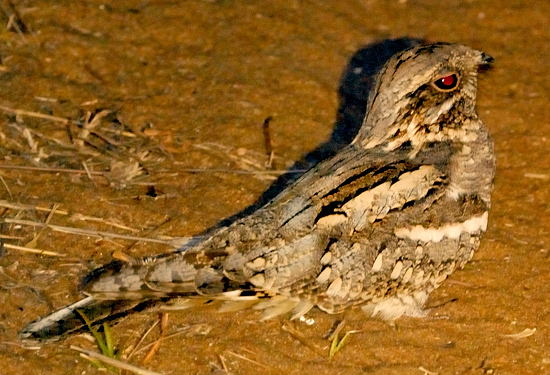
Caprimulgus pectoralis
SUBFAMILY
Caprimulginae
TAXONOMY
Caprimulgus pectoralis Cuvier, 1816, Western Cape, South
Africa. Four subspecies.
OTHER COMMON NAMES
English: Pectoral nightjar; French: Engoulevent musicien; German:
Pfeifnachtschwalbe; Spanish: Chotacabras Mъsico.
PHYSICAL CHARACTERISTICS
9–10 in (23–25 cm); 1.2–2.5 oz (35–70 g). Dark brown, grayish
brown, brownish white, buff, tawny, and white cryptic coloration.
Sexually dimorphic.
DISTRIBUTION
Africa from Kenya and Angola south to South Africa.
HABITAT
Woodlands and forest edges.
BEHAVIOR
Roosts on ground during day; active mainly from dusk to
dawn. Distinctive territorial song a whistled phrase rendered as
Good Lord deliver us.
FEEDING ECOLOGY AND DIET
Catches insect prey on sallying flights from perches.
REPRODUCTIVE BIOLOGY
Unlined nest on ground with clutch usually of two eggs. Eggs
are white to pale pink, usually with brownish spots. Incubation
by female during day, by male at night, period 18 days. Small
young have brownish down. Young able to fly when about 18
days old.
CONSERVATION STATUS
Not threatened.
SIGNIFICANCE TO HUMANS
Usually not noticed by local people, except for its nocturnal
songs.
Other popular Animals
Photo Gallery of - Fiery-necked nightjar




 Animalia Life
Animalia Life